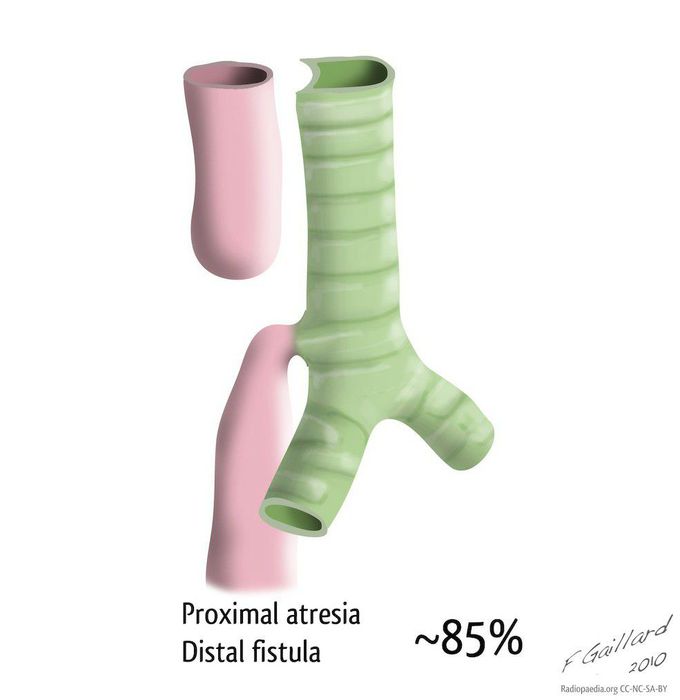


Tracheoesophageal fistula- Connection between trachea and esophagus!
Tracheoesophageal fistula (TEF) is the most common birth defect of the lower respiratory tract which mostly affects males. In more than 85% of the cases, TEF is associated with esophageal atresia. As the trachea develops as an out-growth from the anterior part of the foregut, a failure of division of the cranial part of the foregut into respiratory and esophageal parts during the 4th week leads to the development of an abnormal connection between the trachea and esophagus. Out of the 4 main types, most common is the type C fistula. In this case, the superior part of the esophagus ends blindly and the inferior part joins the trachea near its bifurcation. The children affected with this type of defect cannot swallow and frequently drool saliva. They regurgitate the milk immediately. Gastric contents may also reflux through the fistula into trachea lungs and can cause pneumonitis. Mothers are seen with polyhydramnios as the fluid ingested by the baby cannot enter the intestines for absorption and hence, cannot be disposed off through the placental circulation. Image via: https://radiopaedia.org/cases/8294/studies/9138?lang=gb&referrer=%2Farticles%2Fcongenital-tracheo-oesophageal-fistula%3Flang%3Dgb%23image_list_item_219297

